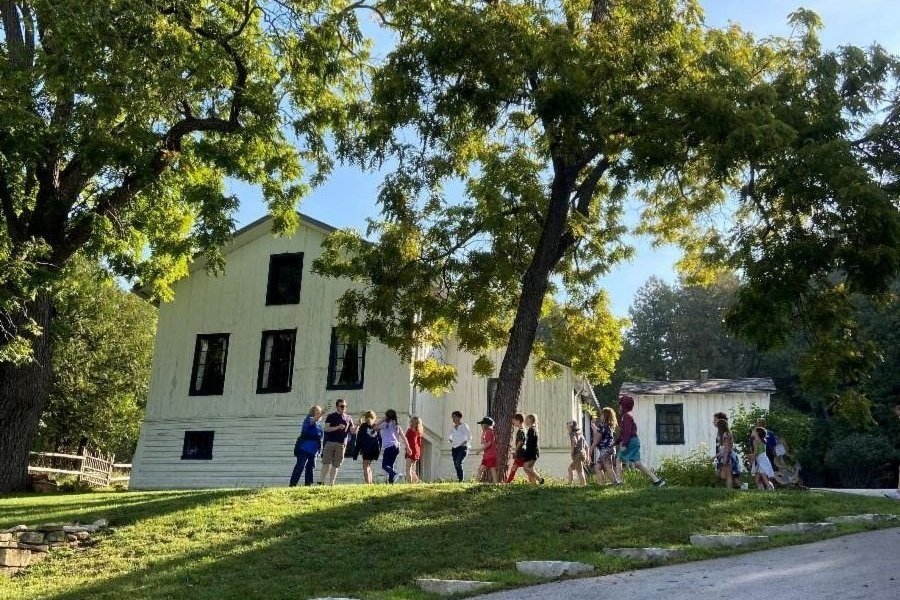Walnut Trees at the Iverson House
Two black walnut (Juglans nigra) trees rise magnificently from the sloping front lawn of the Iverson House. Ephraim’s founder Reverend Andreas Iverson, may have planted the larger one on the north side of the front.
This tree is hefty. The trunk is furrowed with age and has a circumference of 12.2 feet. If one uses a tree age calculator, its estimated is 210 years old. It could have started growing in 1813 when the U.S. flag had just 15 stars and James Madison was President. Did Ephraim’s founder, Reverend Andreas Iverson, plant this tree? Probably not. He arrived fifty years later—in 1853.
For most of the year, large “compound” leaves, comprised of five to twenty-five leaflets, cling to the branches. In fall, hard green spheres nearly the size of a tennis balls, dangle from the branches, too.
These spheres are walnuts.
It’s no surprise Andreas and Laura Iverson gave lawn space to walnut trees. When they immigrated here in 1853, with other Moravians, there were no local stores. Like other settlers and the local Indigenous people, the Iversons knew walnuts would keep well in their basement over the long, cold winter. Walnuts were a healthy food source, too. In modern times, scientists confirmed them as high protein, low carb nuts loaded with anti-oxidants. And, the hulls were used as a natural dye. The Kiowa Indians (Oklahoma) have used the walnut to create a blue-black dye that is later applied to buffalo hides.
Was the walnut a familiar tree to the Iversons and other Scandinavian immigrants? Walnut trees were unusual if seen at all in the Iversons home country, Norway. But, walnuts were, and still are, a familiar tree in southern and eastern Europe as well as places like China.
Gibraltar 3rd graders learn about walnut trees at the Iverson House
Black walnut is common but not abundant tree in Door County’s hardwood forest. Walnut trees prefer moist loamy soils and an extended frost-free season for nut maturation. The tree is allelopathic, as any gardener knows who has planted flowers or vegetables beneath a walnut's wide, leafy crown. It turns out that the roots release chemicals that can harm other plants. This adaptation is a competitive advantage that limits competition.
Walnuts add a delicious crunch to baked treat. Find out for yourself by trying the recipe below!
Bundt Apple Cack with Black Walnuts
Preheat oven to 350º. Lightly oil pan (Bundt). In large bowl,mix 2 c canola oil, 2 c brown sugar, 2 t vanilla, and 4 eggs. Add 4 coarsely chopped apples cored and peeled, 1 c raisins, 1 1/2 c chopped black walnuts. In separate bowl, mix 4 c flour, 2 t baking soda and 1 t salt. Add 2 t cinnamon and 2 t nutmeg. Blend apple and flour mixtures. Pour batter into pan and bake at 350º for 60 to 70 minutes. Let cool in pan 10 minutes.
Topping: 1 stick butter, 1 t vanilla, ½ c brown sugar, ¼ c milk. Prepare topping in small saucepan until melted and combined. Do not boil. Before removing cake from pan, poke holes with toothpick. Pour half of topping over cake. Remove cake from pan. Poke holes and pour rest of topping over top of cake. Recipe submitted by Susan (Bartlett) Chomeau for AMAZING GRAZING, EHF’s 2003 cookbook.
Written by Kathleen Harris, 2023


